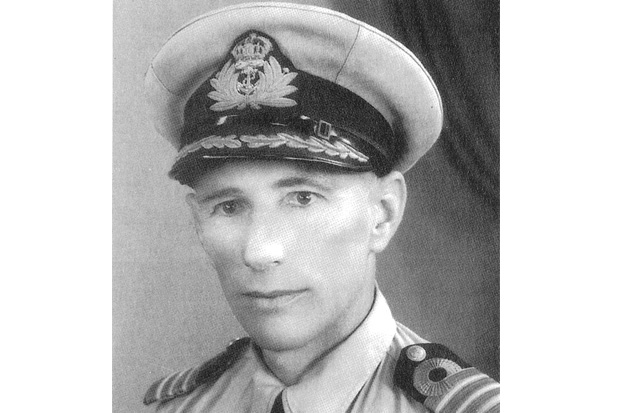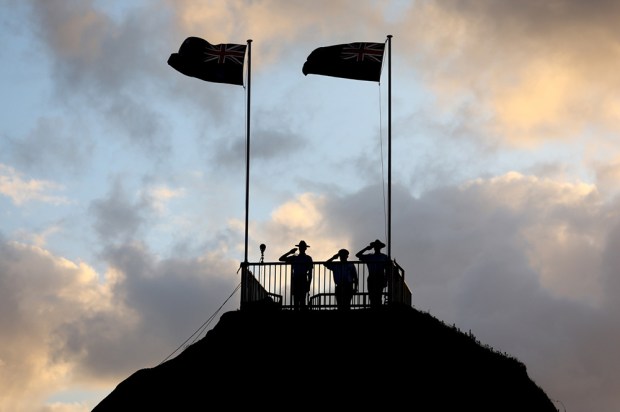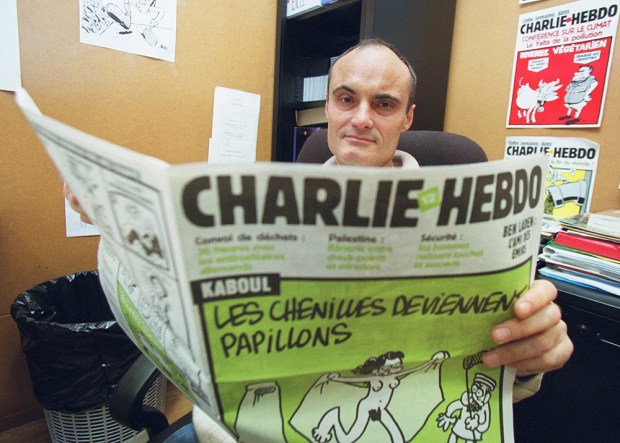The brilliant Oscar-nominated film about Alan Turing, The Imitation Game, has introduced a wide public to the crucial role of signals intelligence, and particularly code-breaking, in the Allied victory over the Nazi threat to civilisation. Alan Turing was, until relatively recently, a great unsung hero of that war, a man who made a unique contribution to victory and deserved a much better end.
In some ways the movie is unfair to Turing – his portrayal as an anti-social nerd, whereas his colleagues from those years say differently; they speak of his possession of a wry sense of humour and a close camaraderie with his team. The Russian spy insertion is also an invention.
Reduced to essentials, what Turing had, when the free world desperately needed it, was an intuitive genius that enabled him and his Bletchley Park team to crack the German Enigma naval codes, providing the key ingredient in winning the battle of the Atlantic, a victory that saved Britain and most everyone else.
In our part of the world, the key to winning the Pacific war was, without much dissent, the cracking of the Japanese naval codes, arguably the toughest Axis codes of all, not least due to the arcane complexity of the language and the Japanese Navy’s chronic suspicion of their signal’s vulnerability, prompting them to frequently change and further complicate their codes; in contrast to the confidence of the Germans that Enigma was unbreakable.
If there was a truly outstanding figure in the war against the Japanese codes it was an Australian naval officer, a man very few Australians have ever heard of, called Eric Nave. Born in Adelaide, he joined the Royal Australian Navy in 1917, went to Japan in the early 1920s to learn Japanese, with distinction, worked in London at the request of the British Admiralty and, in the years leading up to the Pacific war, was posted to a series of Far Eastern listening outposts of Empire (Shanghai, Hong Kong and Singapore), all done in close liaison with Bletchley.
Codebreaking requires special skills, one has to look for ‘cribs’ or wedges to get into a coded message; a repeat of a message, a mistake, a known salutation or almost anything. It helps if you have a certain kind of mind, as both Turing and Nave had.
Nave’s story is not easy to summarise, he was stationed all over world, particularly the ‘Far East’, and code-breaking by its nature is a difficult subject to fathom, add to that the fact that his Navy and later ASIO work were necessarily shrouded in strict official secrecy up until recently. Fortunately, a former RAN Captain and Director of Naval Intelligence, Ian Pfennigwerth, has written an excellent biography, A Man of Intelligence: The Life of Captain Eric Nave, Australian Codebreaker Extraordinary (Rosenberg).
Pfennigwerth and others believe that the very real achievements of Australian code-breakers in the Pacific war, and particularly the enormous contribution of Eric Nave, have been shamefully overlooked, not least because most of the ‘big books’ on the subject have been written by Americans for Americans.
There is little doubt that America ‘saved our bacon’ and everyone else’s bacon for that matter. In the Pacific, prior to the final air campaign and The Bomb, it was the US Navy and the Marines, that made all the difference. But they didn’t do it all; there were also many tens of thousands of Aussies and Brits slogging away, not least our codebreakers.
Alas, certain individuals in the US Navy’s signals arm in particular behaved with incredible arrogance. Nave himself was the target of quite outrageous opposition from one particular US Naval officer of lower rank to Nave. In 1942 Nave rudely had his intelligence organisation in Melbourne, the RAN’s Special Intelligence Bureau, taken off him in an underhanded campaign of smear by this cocky young officer. Sadly, it wasn’t just one officer, on the intelligence front the US Navy during the war seemed to harbour a culture of deep-seated Anglophobia (and that certainly included Australians), spreading out from the Chief of the Navy, Admiral Ernest King, and particularly pervasive in naval intelligence. At one point during the war it almost led to a complete break with Bletchley Park. But it wasn’t just the British and Australians they seemed to detest; incredibly, they behaved just as badly towards the US Army code-breakers. The wider context of this ‘war within a war’ is well captured in Michael Smith’s The Emperor’s Codes.
Nave spent most of the last 50 years of his life in Melbourne and, with the exception of the last three years of the war in Brisbane, where military intelligence was concentrated with MacArthur’s move north. In the post-war years he returned to his family home in Melbourne and, on leaving the Navy in 1949, was recruited by the new national intelligence agency, ASIO, working closely with Sir Charles Spry.
In those days Melbourne was the country’s primary intelligence hub. Nave retired from ASIO in 1959 at the age of 60, took on any number of civic positions, most notably as the very effective President of the Naval Association of Australia. He retired from the Navy a Captain, having been considered for promotion to Rear Admiral, but turned down, absurdly in the context, because he didn’t have sufficient ‘sea time’. He was awarded a military OBE in 1945 (for breaking the Japanese codes and his contribution to the Allied cause). He died in Melbourne in 1993 at the grand age of 94.
The only American naval code-breaker in the Pacific war of comparable brilliance to Nave was Joseph Rochefort. He joined the US Navy at the same time Nave joined the RAN and also learnt Japanese in the 1920s in Japan. Although recommended for the prestigious Distinguished Service Medal (DSM) by the great Admiral Nimitz himself, it was opposed by the same malign influences that made Nave’s work unnecessarily difficult. Rochefort died in 1976, aged 76, but was awarded the DSM posthumously in 1985 and a year later the Presidential Medal of Freedom. It would be a wonderful thing if Eric Nave could receive comparable posthumous recognition.
Got something to add? Join the discussion and comment below.
Get 10 issues for just $10
Subscribe to The Spectator Australia today for the next 10 magazine issues, plus full online access, for just $10.
You might disagree with half of it, but you’ll enjoy reading all of it. Try your first month for free, then just $2 a week for the remainder of your first year.














Comments
Don't miss out
Join the conversation with other Spectator Australia readers. Subscribe to leave a comment.
SUBSCRIBEAlready a subscriber? Log in